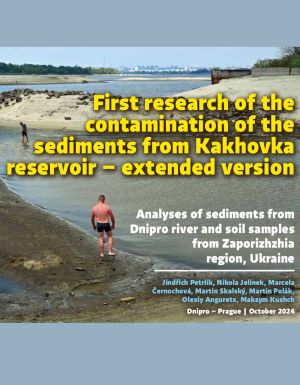A study investigating toxic pollution of sediments from the former Kakhovka dam and other sites in Zaporizhzhia, Ukraine.
The destruction of the Kakhovka dam on 6 June was one of the most striking examples of environmental damage caused by the Russian invasion, causing widespread flooding, the evacuation of thousands of people and at least 32 deaths. The area of the former reservoir itself was largely drained. As the water receded, another problem arose. For years, the sediments of the former reservoir had accumulated pollution from industry and agriculture - where highly toxic pesticides, now banned, were widely used during the Soviet years. There had been no assessment of what exactly was in the sediments to inform the discussion about remediation of the war damage and the future of the former reservoir - until now.
To indicate the level of risk caused by potential contamination of the sediments of the exposed river bottom, the researchers analysed fourteen samples: eleven from sediments of the former reservoir, two soil samples from the impact craters of a Russian S-300 system rockets, and one soil sample from the industrial district in Zaporizhzhia. The samples were collected in two rounds and tested for a wide range of contaminants.
The currently published study is one of the results of a long-term collaboration between the Czech NGO Arnika and its Ukrainian partners Free Arduino (Ivano-Frankivsk) and Green World (Dnipro) within the project Clean Air for Ukraine. The Czech company Dekonta also collaborated on the study of the sediments. The research was financed by the Transition Promotion Program of the Ministry of the Foreign Affairs of the Czech Republic and the Government of Sweden.








